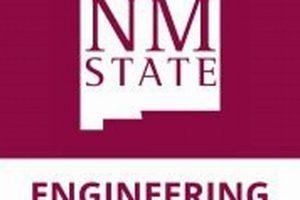A compilation showcasing an individual’s skills, projects, and experiences within the field of flight vehicle design and development. This collection typically includes academic projects, research contributions, and any relevant professional experiences demonstrating proficiency in areas such as aerodynamics, propulsion, structures, and control systems. For example, it might contain detailed reports on wind tunnel testing, structural analysis of aircraft components, or the design and simulation of flight control algorithms.
Such a collection serves as a crucial tool for demonstrating competence to potential employers or academic institutions. It provides tangible evidence of an individual’s capabilities beyond transcripts and resumes, offering a deeper understanding of their practical skills and problem-solving abilities. Historically, the emphasis on these collections has grown alongside the increasing complexity of the aerospace sector, necessitating a more comprehensive evaluation of a candidate’s preparedness.
The subsequent sections will delve into the essential elements of a strong collection, strategies for its effective presentation, and the specific skills and projects that are most valued by industry professionals. Furthermore, resources and tools for creating and maintaining such a document will be explored.
Crafting an Effective Aerospace Engineering Portfolio
The following guidelines offer insights into developing a compelling collection of work that highlights an individual’s capabilities and expertise in the field.
Tip 1: Prioritize Relevant Projects: Include projects directly related to aerospace engineering, such as aircraft design, propulsion systems, or satellite technology. A project involving the design of a small unmanned aerial vehicle (UAV) would be more relevant than a general engineering project.
Tip 2: Quantify Achievements: Wherever possible, quantify results and accomplishments. For instance, instead of stating “Improved aerodynamic performance,” specify “Reduced drag coefficient by 15% through airfoil optimization.”
Tip 3: Showcase Technical Skills: Highlight proficiency in relevant software and tools. Include examples demonstrating the use of CAD software (e.g., SolidWorks, CATIA), simulation software (e.g., ANSYS, MATLAB), or programming languages (e.g., Python, C++).
Tip 4: Provide Detailed Documentation: Ensure that each project is accompanied by thorough documentation, including design specifications, analysis reports, and test results. Clear and concise explanations are crucial.
Tip 5: Emphasize Problem-Solving Abilities: Demonstrate the ability to identify and solve complex engineering problems. Outline the problem, the approach taken, and the solution implemented.
Tip 6: Demonstrate Teamwork: If projects involved teamwork, clearly articulate the individual’s specific role and contributions. Highlight the collaborative aspects and the impact of the individual’s efforts on the team’s overall success.
Tip 7: Present Professionally: Maintain a clean, organized, and visually appealing format. Employ consistent formatting and use high-quality images or diagrams.
Tip 8: Tailor to the Specific Application: Customize the presentation to align with the specific requirements and interests of the targeted employer or academic institution. Focus on projects and skills that are most relevant to the specific opportunity.
By adhering to these guidelines, individuals can create a document that effectively showcases their abilities and increases their prospects in the competitive field.
The subsequent sections will focus on the long-term maintenance and strategic updating of such a document to ensure its continued relevance throughout a career.
1. Project scope and depth
Project scope and depth are defining characteristics within an aerospace engineering portfolio, fundamentally influencing its perceived value. A limited scope project, such as a simple stress analysis on a generic beam, might demonstrate basic competency but lacks the impact of a project involving the conceptual design of a hypersonic vehicle. The latter necessitates a broader understanding of aerodynamics, propulsion, materials science, and control systems. The presence of projects exhibiting considerable scope and depth within a collection signals an individual’s capacity to grapple with complex, multi-faceted engineering challenges.
The importance of project scope and depth is particularly evident when evaluating candidates for advanced roles or research positions. Employers and academic institutions scrutinize these factors to gauge an individual’s ability to contribute meaningfully to ongoing research or development efforts. For example, a graduate student applying for a research assistant position in spacecraft propulsion would benefit significantly from including a project detailing the design and simulation of a novel rocket engine cycle, showcasing a deep understanding of thermodynamic principles and practical design considerations. Conversely, a project focusing solely on literature review, without any practical application or analysis, would be less impactful.
In conclusion, project scope and depth within an aerospace engineering portfolio serve as a critical indicator of an individual’s readiness for complex engineering tasks. A portfolio lacking in projects of significant scope and depth diminishes its overall effectiveness. Demonstrating an ability to manage comprehensive projects, integrating diverse engineering disciplines, directly enhances the document’s value and persuasiveness.
2. Technical skill demonstration
Technical skill demonstration is a cornerstone of any effective aerospace engineering portfolio. It provides concrete evidence of an individual’s practical capabilities and proficiency in applying engineering principles. The presence of such evidence significantly strengthens the overall impact and credibility of the document.
- Software Proficiency
Demonstrated expertise in industry-standard software, such as CAD (e.g., CATIA, SolidWorks), CAE (e.g., ANSYS, Abaqus), and programming languages (e.g., MATLAB, Python), is crucial. A portfolio might include examples of complex geometries created in CAD, finite element analysis results from CAE simulations, or custom scripts developed for data processing and analysis. The absence of demonstrated software proficiency raises concerns about an individual’s ability to contribute effectively to modern engineering workflows.
- Analytical and Computational Skills
The ability to perform analytical calculations and develop computational models is essential in aerospace engineering. A portfolio might showcase skills in areas such as aerodynamics, structural mechanics, thermodynamics, and control systems. Examples could include the derivation of aerodynamic coefficients, the analysis of stress distributions in aircraft components, or the development of flight control algorithms. The presentation of theoretical knowledge applied to practical problems is a strong indicator of engineering competence.
- Experimental Skills
Experience with experimental techniques, such as wind tunnel testing, materials testing, or flight testing, is highly valued. A portfolio might include reports on experimental investigations, including descriptions of experimental setups, data acquisition methods, and data analysis techniques. Demonstrating the ability to design and conduct experiments, as well as interpret and validate results, is a testament to an individual’s practical engineering skills.
- Hardware and Fabrication Skills
Hands-on experience with hardware and fabrication processes, such as machining, composite fabrication, or electronics assembly, can be advantageous. A portfolio might include examples of physical prototypes designed and built, demonstrating an understanding of manufacturing processes and practical limitations. The ability to translate theoretical designs into tangible products showcases a well-rounded skill set.
In summary, technical skill demonstration is a critical component of an aerospace engineering portfolio. The absence of clear and compelling evidence of these skills can significantly detract from the overall impact of the document. A strong portfolio effectively showcases an individual’s practical capabilities and readiness for tackling real-world engineering challenges.
3. Problem-solving ability
Problem-solving ability is intrinsically linked to the effectiveness of an aerospace engineering portfolio. The document, at its core, serves to demonstrate not just what an engineer has done, but how effectively they can address challenges. Inclusion of projects that clearly articulate a problem, detail the methodical approach to its solution, and present the outcome significantly elevates the portfolio’s value. A mere listing of tasks completed offers limited insight into an individual’s critical thinking skills; demonstrating the capacity to overcome obstacles distinguishes a strong candidate. For example, a project detailing the design of a fuel-efficient aircraft wing becomes substantially more compelling if it outlines the initial challenges encountered with drag reduction, the iterative design process employed to address those challenges, and the quantifiable improvements achieved through computational fluid dynamics simulations.
Further, the selection of projects included in the collection should showcase a range of problem-solving approaches. Presenting examples of both analytical and experimental problem-solving methods demonstrates versatility. An aerospace engineer might showcase analytical skills by including a project focused on optimizing a satellite’s trajectory to minimize fuel consumption, employing Lagrange’s equations and numerical optimization techniques. Simultaneously, experimental problem-solving can be demonstrated through a project involving wind tunnel testing to identify and mitigate flutter in an aircraft wing prototype. These diverse examples affirm the individual’s ability to adapt their problem-solving techniques to suit the specific demands of the situation. Moreover, demonstrating the ability to identify the root cause of a problem, rather than merely addressing its symptoms, is a highly valued skill, particularly in fields that prioritize safety and reliability.
In conclusion, the relationship between problem-solving ability and an aerospace engineering portfolio is not merely correlative, but causative. A portfolio that effectively highlights an individual’s capacity to define, analyze, and resolve complex engineering problems significantly enhances its overall impact. Conversely, a portfolio lacking clear demonstrations of problem-solving acumen undermines its effectiveness in conveying an individual’s true potential and value within the aerospace field. Understanding this relationship is crucial for both the engineer compiling the portfolio and the evaluator assessing its content.
4. Quantifiable achievements
Quantifiable achievements represent a critical element within an aerospace engineering portfolio, transforming subjective assessments of skills and experience into concrete, demonstrable evidence of competency. The inclusion of metrics and data provides a tangible measure of the impact and effectiveness of an individual’s contributions.
- Performance Improvements
This facet involves presenting specific improvements achieved in key performance parameters. Examples include a reduction in drag coefficient by a certain percentage through airfoil optimization, an increase in engine thrust-to-weight ratio, or an improvement in fuel efficiency in terms of nautical miles per gallon. These metrics offer direct insight into the engineer’s ability to enhance system performance.
- Cost Savings
Quantifying cost reductions achieved through design optimization, material selection, or process improvements demonstrates an understanding of economic considerations. Examples may include reducing manufacturing costs by a specific dollar amount per unit, or decreasing operational expenses through improved maintenance procedures. Such metrics highlight the engineer’s contribution to project efficiency and financial viability.
- Time Efficiency
Demonstrating improved time efficiency through streamlined workflows, optimized algorithms, or automated processes provides valuable insight. Examples include reducing simulation run times by a measurable factor, accelerating the design cycle through the implementation of new tools, or decreasing project completion time by a specified duration. These metrics showcase the engineer’s ability to optimize processes and increase productivity.
- Error Reduction
Quantifying the reduction in errors, defects, or failures provides a clear indication of improved reliability and quality. Examples include decreasing the number of structural failures during testing, reducing the frequency of software bugs through rigorous testing protocols, or minimizing manufacturing defects through process control measures. These metrics highlight the engineer’s focus on precision and quality assurance.
The integration of these quantifiable achievements within an aerospace engineering portfolio significantly enhances its persuasiveness, providing potential employers or academic institutions with objective evidence of an individual’s capabilities and contributions. Absence of these metrics diminishes the impact of the portfolio, relying solely on qualitative descriptions of experience.
5. Clear documentation
Clear documentation is inextricably linked to the effectiveness of an aerospace engineering portfolio. While project selection and technical skill demonstration are crucial, their impact is significantly diminished without accompanying, well-structured documentation.
- Comprehensive Project Reports
Complete and organized project reports are essential. These reports should detail the project’s objectives, methodology, results, and conclusions. The inclusion of design specifications, analysis reports, simulation data, and test results demonstrates a thorough understanding of the engineering process. For instance, a report on the design of a composite aircraft wing should include detailed material properties, layup schedules, stress analysis results, and manufacturing procedures. The absence of such detail suggests incomplete understanding.
- Effective Visual Aids
The use of diagrams, schematics, graphs, and images enhances understanding and conveys complex information efficiently. These visual aids should be clear, well-labeled, and directly relevant to the project being described. A schematic of a propulsion system, for example, should clearly identify all major components and their interconnections. Poorly prepared or irrelevant visuals detract from the overall presentation.
- Concise Explanations
Technical explanations should be clear, concise, and free of jargon. The language should be precise and avoid ambiguity. Each project description should clearly articulate the problem being addressed, the approach taken, and the results achieved. Unclear or overly complex explanations can obscure the underlying engineering principles and diminish the impact of the project.
- Adherence to Standards
Documentation should adhere to industry standards for formatting, notation, and citation. This demonstrates attention to detail and professionalism. Proper citation of sources is essential to avoid plagiarism and to provide context for the work being presented. Failure to adhere to these standards raises concerns about an individual’s commitment to professional practice.
In summary, clear documentation is not merely an addendum to an aerospace engineering portfolio, but an integral component that enhances its credibility and persuasiveness. It provides tangible evidence of an individual’s thoroughness, attention to detail, and communication skills, ultimately influencing the evaluation of their overall competence. Poor or absent documentation renders even the most impressive projects less impactful, weakening the entire presentation.
6. Professional presentation
A well-crafted compilation of qualifications and experiences within the aerospace engineering discipline hinges significantly on professional presentation. This encompasses not only the content itself but also the manner in which it is organized, formatted, and conveyed to the intended audience. A substandard presentation can undermine even the most impressive technical achievements, detracting from the overall impact of the document.
- Visual Clarity and Consistency
Visual clarity is paramount. The layout should be uncluttered, employing a consistent font, style, and formatting throughout. Figures, diagrams, and images must be high-resolution and properly labeled. Inconsistent formatting creates a perception of carelessness and a lack of attention to detail, reflecting poorly on the individual’s professionalism. For instance, using a mix of font styles and sizes, or including low-resolution images of projects, can significantly detract from the portfolio’s impact.
- Logical Organization and Structure
The information within must be logically organized and easy to navigate. A clear structure, with well-defined sections and subsections, enables the reviewer to quickly locate specific information of interest. A chronological or thematic arrangement of projects and experiences aids comprehension. A disorganized portfolio, conversely, forces the reviewer to spend unnecessary time searching for relevant information, leading to frustration and a negative impression. Using a well-defined table of contents and clear section headings improves navigability.
- Concise and Accurate Language
Language should be precise, concise, and free of grammatical errors and typos. Technical descriptions must be accurate and avoid jargon when possible. Clear and effective communication is essential for conveying complex engineering concepts. A portfolio riddled with grammatical errors and poorly worded explanations can create the impression of a lack of competence and attention to detail. Proofreading and editing are crucial steps in ensuring professional presentation.
- Tailored Content and Relevance
The content presented must be tailored to the specific requirements and interests of the intended audience. Emphasizing projects and skills that are directly relevant to the target position or academic program demonstrates a clear understanding of the recipient’s needs. Including irrelevant or tangential information detracts from the overall focus and weakens the presentation. Researching the target organization and tailoring the portfolio accordingly is essential for maximizing its impact.
In conclusion, professional presentation is an indispensable element of an aerospace engineering portfolio. Adhering to principles of visual clarity, logical organization, concise language, and tailored content elevates the portfolio from a mere collection of experiences to a compelling and persuasive representation of an individual’s capabilities. Conversely, neglecting these principles can significantly diminish the impact of the portfolio, regardless of the underlying technical expertise.
7. Relevance to target
The strategic alignment of an aerospace engineering portfolio with the specific requirements and expectations of its intended audience constitutes a critical determinant of its effectiveness. An indiscriminate approach to portfolio compilation can result in a document that fails to resonate with potential employers or academic institutions.
- Job Description Alignment
A portfolio tailored to a specific job description demonstrates a clear understanding of the required skills and experience. It involves highlighting projects and accomplishments that directly address the key qualifications outlined in the description. For example, an applicant for a structural analysis position at a commercial aircraft manufacturer would prioritize projects involving finite element analysis of aircraft components, emphasizing experience with relevant software packages like ANSYS or Abaqus. Conversely, a portfolio emphasizing only propulsion system design would be less effective in this context. The deliberate alignment of portfolio content with the specific demands of the job demonstrates a proactive approach and increases the likelihood of a positive evaluation.
- Company Culture and Values
Beyond technical skills, the portfolio can subtly reflect an understanding of the target company’s culture and values. This involves showcasing projects that align with the company’s mission and priorities. For instance, a portfolio submitted to a company focused on sustainable aviation might highlight projects involving the development of fuel-efficient aircraft designs or the integration of alternative fuels. Such alignment demonstrates a thoughtful approach and suggests that the applicant’s values are compatible with the organization’s ethos. This subtle alignment can be a differentiating factor in a competitive applicant pool.
- Academic Program Requirements
When applying to graduate programs, the portfolio should align with the research interests of the faculty and the specific requirements of the program. Highlighting research projects that align with the faculty’s expertise demonstrates a keen interest in the program’s area of focus. Including publications or conference presentations further strengthens the application, showcasing the applicant’s research capabilities and potential for contributing to the program’s research agenda. A generic portfolio, lacking specific alignment with the program’s objectives, may be perceived as less compelling.
- Skill Emphasis Based on Industry Sector
Different sectors within aerospace engineering place varying emphasis on specific skill sets. A portfolio targeting the defense sector might prioritize projects involving secure communication systems, missile guidance, or unmanned aerial vehicles. Conversely, a portfolio targeting the space sector might emphasize projects involving satellite design, orbital mechanics, or spacecraft propulsion. Tailoring the portfolio to reflect the specific skill demands of the target industry sector demonstrates a strategic approach and enhances its relevance.
In conclusion, the “relevance to target” principle underscores the importance of tailoring an aerospace engineering portfolio to align with the specific requirements and expectations of the intended recipient. By carefully selecting and presenting projects that demonstrate the required skills, values, and expertise, an individual can significantly enhance the impact of their portfolio and increase their chances of success in a competitive environment. A generalized document, lacking strategic alignment, diminishes its effectiveness and fails to fully leverage the individual’s potential.
Frequently Asked Questions
This section addresses common inquiries regarding the creation, content, and purpose of a professional document for individuals in the field. These questions aim to provide clarity and guidance for those seeking to develop an effective presentation of their skills and experience.
Question 1: What constitutes a suitable project for inclusion?
Suitable projects demonstrate application of aerospace engineering principles. These projects may stem from academic coursework, research endeavors, or professional experiences. The projects should showcase technical proficiency in areas such as aerodynamics, propulsion, structures, or control systems. Projects lacking a clear connection to core aerospace engineering disciplines are generally unsuitable.
Question 2: How much detail should be included for each project?
The level of detail should be sufficient to demonstrate a thorough understanding of the project’s objectives, methodology, and results. Detailed reports, design specifications, analysis results, and test data should be included. Visual aids, such as diagrams and schematics, are valuable. However, excessive or irrelevant detail should be avoided.
Question 3: Is it necessary to include proprietary or confidential information?
The inclusion of proprietary or confidential information is strongly discouraged. Instead, focus on projects that can be presented without violating confidentiality agreements or intellectual property rights. Summarized versions of projects, omitting sensitive details, may be permissible with appropriate authorization.
Question 4: Should negative results or project failures be included?
The inclusion of projects that did not achieve their intended objectives can be beneficial, provided that the learning experience is clearly articulated. Focus on the analysis of the failure, the lessons learned, and the steps taken to mitigate similar issues in the future. Framing failures as learning opportunities demonstrates resilience and a commitment to continuous improvement.
Question 5: What is the optimal format for the document?
The optimal format is generally a PDF document, ensuring compatibility across various platforms and devices. The document should be well-organized, visually appealing, and easy to navigate. Clear section headings, a table of contents, and consistent formatting are essential. Online portfolio platforms may also be considered, but a downloadable PDF version is recommended.
Question 6: How often should the document be updated?
The document should be updated regularly to reflect new skills, projects, and experiences. Ideally, an update should occur at least annually, or whenever significant new information becomes available. An outdated document can undermine an individual’s credibility and suggest a lack of engagement with the field.
These answers provide fundamental guidance for creating a compelling and informative representation of an aerospace engineer’s qualifications. Adherence to these principles will enhance the effectiveness and impact of the document.
The subsequent section will explore specific resources and tools that can aid in the creation and maintenance of this critical professional document.
In Summary
The preceding exploration has underscored the critical role of the collection within the aerospace engineering profession. It serves as a dynamic representation of an individual’s capabilities, extending beyond academic transcripts and rsums to offer concrete evidence of practical skills and problem-solving acumen. Effective construction and presentation, tailored to specific opportunities, are paramount.
Given its significance, the continued development and refinement of this document should be viewed as an ongoing professional imperative. In an increasingly competitive landscape, a well-maintained and strategically focused collection is essential for career advancement and recognition within the aerospace community. Its careful curation represents a commitment to professional excellence and a proactive approach to shaping one’s career trajectory.







